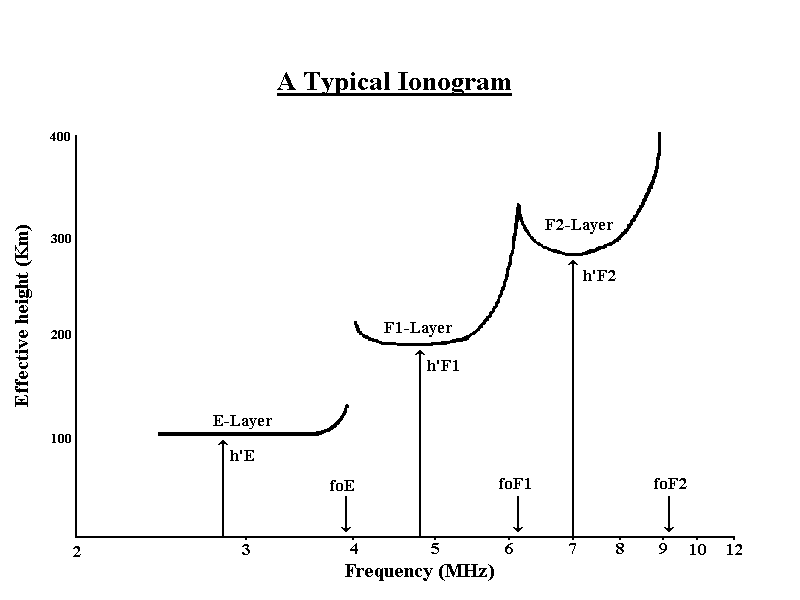|
From ionograms such as this it has been deduced
that there are several layers in the ionosphere, which may or may not be present
at a given time. These have, for historical reasons, been named the E, F1 and F2
layers.
|

Click on the image for a better view |
|
It is possible to determine a number of parameters from an ionogram for
each of these layers such as the height of the layer or the highest frequency
that a layer reflects (its penetration frequency or critical frequency). This
process of reading parameter values from ionograms is known as scaling,
a method which was used to derive almost all information from the early, analogue
ionosondes (Piggott and Rawer, 1972, 1978; Piggott, 1975; Wakai et al., 1986).
Manual scaling is not performed on ionograms from the AIS. Instead, all the
relevant echo information is stored in a digital form. However, some
parameters, so-called AIS Key Parameters, are extracted automatically on a
routine basis as part of the GGS (Global Geospace Science) project and
transferred back to HQ on a weekly basis.
|